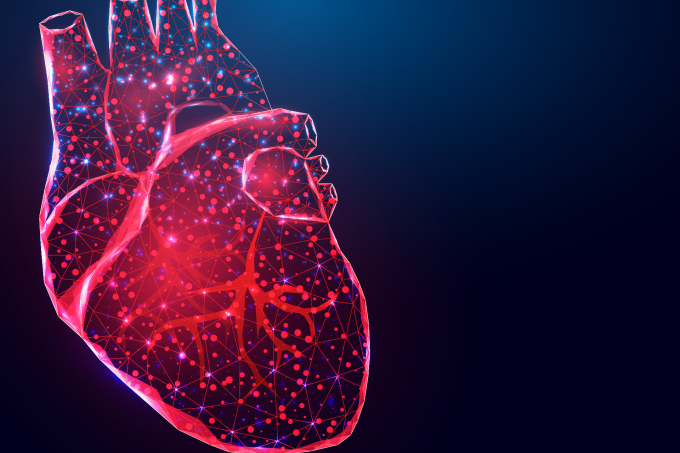Your Cardiovascular System
Overview
The human body has different systems for handling different functions. All of these systems are vital for health and life. Your heart, veins, and arteries are part of the cardiovascular system, which distributes blood throughout your body. As you explore information about your heart, veins, and arteries, you may also hear the term “circulatory system.” The cardiovascular system is part of your more extensive circulatory system.
Blood
Blood travels through your entire cardiovascular system and is a tissue that’s made up of red blood cells, white blood cells, plasma, platelets, and other components. The blood is made up of the following components:
- Red blood cells carry oxygen and give blood its red color
- White blood cells fight infection and have other functions
- Platelets help cuts, scrapes, and wounds clot
- Plasma, the liquid part of blood, transports nutrients, proteins, and hormones throughout the body
Your healthy body is constantly replenishing each of these blood components. Some can be replenished within a few hours, and some within a few weeks.
The average person has between 1 gallon and 1½ gallons (4 to 6 liters) of blood. Your heart pumps that whole blood volume every minute – imagine more than a gallon or 4 liters of blood flowing through your heart every minute!
What are the different blood types?
While everybody’s blood is red, not everybody has the same blood type. There are eight blood types:
| O negative | O positive |
| A negative | A positive |
| B negative | B positive |
| AB negative | AB positive |
The letters indicate specific types of proteins found on the red blood cells. The positive or negative indicates whether you have the “Rh” protein in your blood (positive) or not (negative). O positive is the most common blood type, occurring in about 1/3 of the world's population.
What does blood do?
Blood travels through your entire cardiovascular system. These cells and other substances in blood together serve several critical functions:
- Delivery of oxygen and nutrients to the rest of the body
- Removal of carbon dioxide and waste products from the body
- Immune function
- Blood clotting and wound healing
- Regulation of body systems
Arteries
Arteries are strong tubes, or blood vessels, that carry blood from your heart to the rest of your body. There are more than 20 large, major arteries throughout the body, which then branch out into many smaller tubes. This extensive network carries blood to all parts of the body.
Each artery is made up of three layers:
- A smooth layer on the inside
- A thick layer of muscle in the middle
- A rough layer on the outside
While strong and flexible, arteries can become less effective over time. A substance called plaque can build up in the arteries, restricting blood flow and, ultimately, stopping or blocking it altogether. Plaque formation is a serious cardiovascular disease (CVD) and causes the following conditions:
- Heart attack
- Stroke
- Peripheral artery disease (PAD)
- Renal artery stenosis (RAS)
Veins
Veins are blood vessels that act like elastic tubes. They carry blood from your organs and tissues of the body back to your heart.
Each vein is made up of three layers:
- A layer of thin membranous tissue on the inside
- A layer of thin bands of smooth muscle in the middle
- A layer of connective tissue on the outside
Your veins are strong and flexible, but they can be affected by the following medical conditions:
- Varicose and spider veins
- Deep vein thrombosis (DVT)
Arteries and veins are different from one another, but together, they form an essential network to transport blood throughout the body.
| Arteries | Veins |
|---|---|
| Carry blood away from the heart to the tissues of the body | Carry blood from the tissues of the body back to the heart |
| Are usually positioned deeper within the body | Are usually positioned closer beneath the surface of the skin |
| Are more muscular, which helps transport blood and regulate blood pressure | Are less muscular than arteries but contain valves to help keep blood flowing in the right direction, usually toward the heart |
| Would generally remain open if blood flow stopped due to their thick muscular layer | Tend to collapse if blood flow stops |
The cardiovascular system
All components of the cardiovascular system are carefully balanced and interdependent. Because of this, when a problem arises in one part of the system, other areas may also be affected. A person with narrowed heart/coronary arteries, or coronary artery disease (CAD), is likely to have narrowed arteries in the legs, known as peripheral artery disease (PAD). Similarly, a person with a narrowing in the arteries leading to the kidneys, called renal artery stenosis (RAS), may also have narrowed in the main artery leading to the brain (carotid artery disease).
This is why diseases of the cardiovascular system put people at risk for many conditions, such as heart attack, stroke, kidney failure, and other serious illnesses.

Your heart
Every day, the heart pumps 2,000 gallons of blood through blood vessels to carry critical oxygen and nutrients to all body parts and to remove waste products.